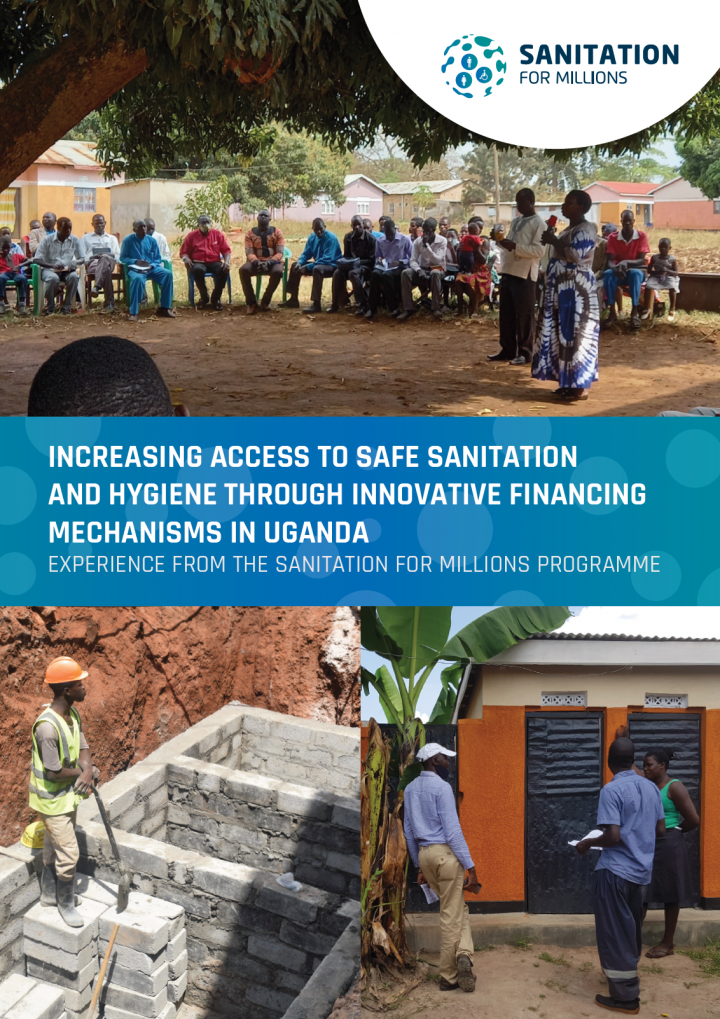Increasing access to safe sanitation and hygiene through innovative financing mechanisms in Uganda - Experience from the Sanitation for Millions programme
Sanitation for Millions (2021)

Published in: 2021
Pages: 24
Publisher:
GIZ and Sanitation for Millions programme Uganda
Author:
Sanitation for Millions
Uploaded by:
SuSanA Admin
Partner profile:
common upload
1257 Views
33 Downloads
Globally, 4.2 billion people do not have access to safe sanitation services, and approximately 3 billion lack basic handwashing facilities. Even in 2021, almost 700 million people still practise open defecation and nearly 400 million children attend schools with no sanitation facilities at all.
The large financing gap has been identified as one of the greatest barriers to achieving the water, sanitation and hygiene-related targets of the SDGs. There are only three main / consistent sources of financing for water and sanitation services: taxes, tariffs and transfers. The level of investment required to deliver sanitation goods and services to those who lack access is far beyond the capacity of public finance alone. Even in combination, the ‘3 Ts’ are not enough to address the need for water and sanitation services in developing countries anywhere near adequately. The Covid-19 pandemic situation has further exuberated the situation through a diminished tax base and competition for resources towards mitigating the spread of the virus.
In Uganda, investment through the Water and Environment Sector remains low with recent budget allocations at only 4% of the national budget. Estimates for the investment required to align with the SDG targets by 2030 and to extend safe access to sanitation are substantially higher. Any increase in overall sector financing will remain inadequate to address the access deficit, especially at household level, as first mile projects like centralised sewage and faecal sludge treatment facilities are still targeted as priority investments.
Bibliographic information
Sanitation for Millions (2021). Increasing access to safe sanitation and hygiene through innovative financing mechanisms in Uganda - Experience from the Sanitation for Millions programme. GIZ and Sanitation for Millions programme Uganda
Filter tags
English Politicians and local decision makers Practitioners














